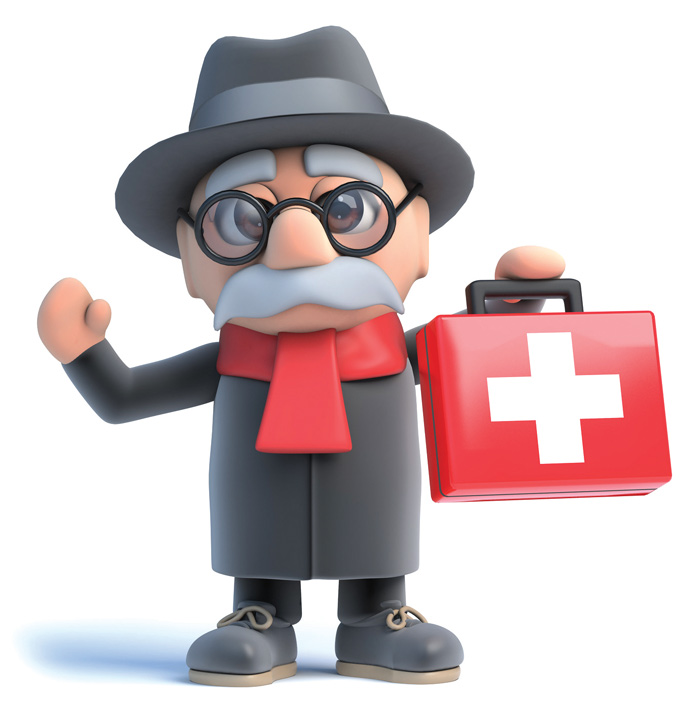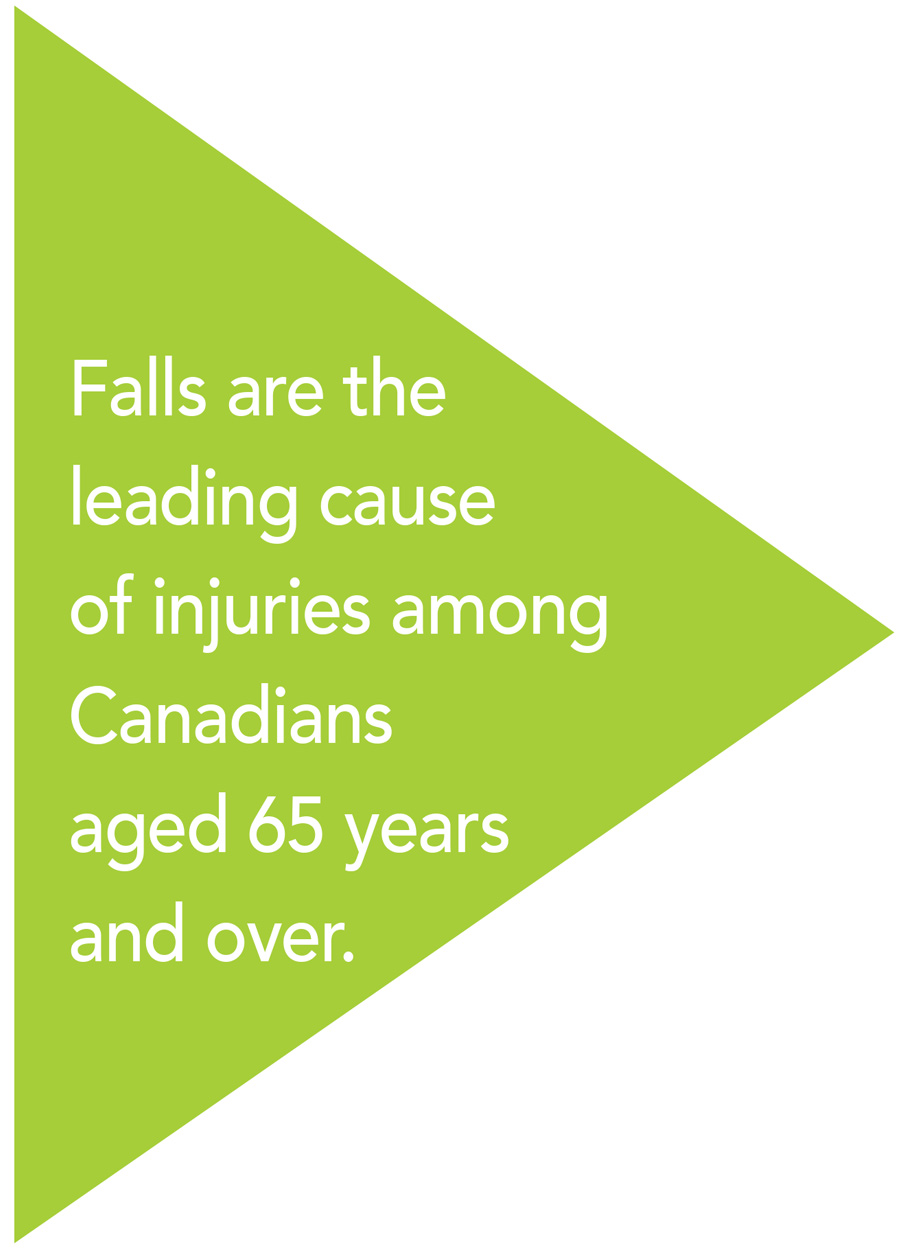16 ways to put safety first this spring
By Mary bart
With warmer weather on our doorstep, we’re all ready to forget about winter, get outdoors, do some renovations to make our homes safe, clean up, be more active, or just enjoy sitting on the back porch watching nature come alive again. But our enthusiasm for the milder temperature needs to be matched by an awareness that spring brings its own opportunities for slips, falls and injuries. Let’s take a look at some key ways to keep safe this season.
1. Spruce up the kitchen. Clean out the refrigerator, freezer and pantry of foods that have dried up or are no longer safe to eat.
Organize your cabinets to have things within arm’s reach. Put infrequently used appliances and dishes away. Add a non-slip mat in front of the sink to stop the floor from being slippery if water spills. Switch to cordless appliances, thus reducing the chance of tripping on cords.
2. Don’t tackle cleaning jobs that stretch your physical abilities. Avoid standing on chairs and ladders, and let others help you with window cleaning, reaching upper cabinets, changing ceiling light bulbs and moving furniture.
3 . Renovate to make your home more accessible. Widen doorways to allow wheelchairs to roll into the bathroom. Install countertops at lower levels so that a wheelchair or walker can roll right up to the sink or cupboards.
 4. Are your stairs safe? Are the handrails strong enough to help support you? Is the stair carpet worn? Are your wooden stairs now too slippery for you? Is there “stuff” on your stairs that you can trip over? Eliminate throw rugs. Although they are nice to stand on, the chance of tripping over them is too big a risk.
4. Are your stairs safe? Are the handrails strong enough to help support you? Is the stair carpet worn? Are your wooden stairs now too slippery for you? Is there “stuff” on your stairs that you can trip over? Eliminate throw rugs. Although they are nice to stand on, the chance of tripping over them is too big a risk.
5. Clear the clutter. Keep the hallways, stairs, and bathroom free of magazine racks, extra towels and clothing. Anything that can be tripped over should be considered a hazard. Organize any outside clutter such as garden tools, hoses and planters, which can easily be tripped over.
6 Emergency planning. Create an emergency kit that includes a working flashlight, bandages, tape, scissors and antibiotic cream. This is also an excellent place to keep a list of contacts and their phone number. Have your phone programmed with important contact numbers on speed dial. Have at least two fire extinguishers—one in the kitchen and one within easy reach. Make sure you know how to use them. Seconds often count. If you have moved to an assisted living centre or live in condo/apartment, find out where the exits are and how the emergency system works. The staff will be glad to answer your questions.
7. Add an emergency-response system and install double-sided locks. Being able to open the lock from either side of the bathroom door means that you can be helped in an emergency.
8. Take your time. Don’t rush while heading upstairs or into the bathroom. Rushing will only increase your blood pressure and chances of falling. And be sure to keep floors clear and dry.
9. Install better lighting and level pathways. Proper lighting is critical in order to see obstacles on the stairs, the floor or countertops. Consider installing a motion-sensing light in your bathroom. Add night lights on the route from your bedroom to the bathroom. Check outdoor lights and batteries in smoke and carbon monoxide detectors. Add a railing to your front steps or consider having a ramp installed.
 10. Use an assistive device whenever possible. A walking stick or walker to keep you safe on uneven walking surfaces such as cobblestones or nature trails. And wear well-fitting and lightweight shoes with good traction and arch support. If possible, buy shoes with Velcro closures instead of laces or buckles. If extra support is required, purchase some orthotics or have custom orthotics made for you by a licensed foot specialist. Wear shoes inside the house instead of socks or slippers.
10. Use an assistive device whenever possible. A walking stick or walker to keep you safe on uneven walking surfaces such as cobblestones or nature trails. And wear well-fitting and lightweight shoes with good traction and arch support. If possible, buy shoes with Velcro closures instead of laces or buckles. If extra support is required, purchase some orthotics or have custom orthotics made for you by a licensed foot specialist. Wear shoes inside the house instead of socks or slippers.
11. Always be aware of your exposure to the sun, even on cloudy days, use a sunscreen with an SPF of at least 30. Follow the suggested applications per day, especially if you’re swimming or perspiring. Some liquid foundation make-ups come with sunscreens. Wear a wide-brim sunhat with built-in sunscreen. Choose light-coloured clothes and naturally breathing fabrics such as cotton. Layering your clothes will allow you to adapt to changes in the weather. Sunglasses will protect your eyes from the glaring sun. Limit your time outside when the sun is at its hottest. Moving inside, or at least to a shaded area, from 10am to 4pm will help keep you cool and reduce your risks
of sunburn and sunstroke.
12. Stay hydrated. Keep a bottle of water with you throughout the day. If you are going out for hours, pack a small cooler with bottled water or wear a water-bottle carrier that slips over your shoulder. This will allow you to carry water “hands-free.”
13. Take a cell phone and your medications with you. Even if you are out for just a couple of hours, having them with you will help you cope with emergencies.
14. Pace yourself. Whether doing your shopping, gardening or taking an exercise class, work at a level that is comfortable for you and any physical conditions you have. Listen to your body. Perhaps taking a nap in the afternoon or sitting for a minute to catch your breath are all you need to re-energize yourself. Mostly, be kind to yourself. Know your limits and live
within them.
15. “Buddy up” with a friend or someone you know who will enjoy walking, swimming and dance classes with you. Activity partners can motivate each other, while also acting as personal safety monitors.
16. Keep active. For those with mobility issues, a basic yoga class or some “chair Zumba” may fit the bill. The latter activity will get you moving, laughing and feeling better. You can do chair Zumba at home with any music. Just make sure that your chair, wheelchair or bed is able to handle some movement.
This is the perfect time of year to do a complete home and personal health assessment. Build some safe fitness into your daily routine—by developing the right plans, timelines, budgets and company of friends—and you will have greater confidence, comfort, independence and dignity. So, here’s to the old expression of “safety first.”
Mary Bart is the chair of Caregiving Matters, an Internet-based registered charity that offers education and support to people dealing with the declining health or death of a parent.caregivingmatters.ca














